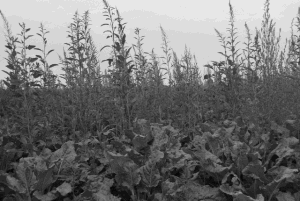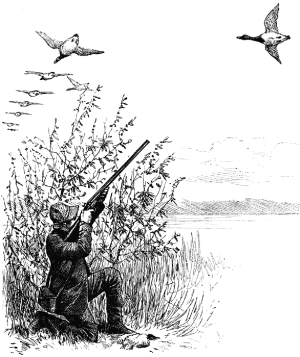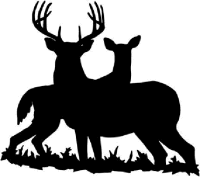

To send a message to an author, click on the author's name at the end of the article.
This Month in Ag Connection | Ag Connection - Other Issues Online
The 2015 growing season was certainly odd and challenging. The largest issue for most producers was the continuous and over abundant moisture received between April and July. Several fields were set back or stunted from waterlogged soils, some were delayed in planting, and over 1.5 million acres went unplanted in Missouri. A large percentage of those fallow fields had no weed management program and several of the planted fields were treated with only a partial or a delayed herbicide program. Needless to say, weedy fields with waterhemp, marestail, and ragweed species were a common sight around the state. Unfortunately, the majority of those weeds matured and deposited viable seed back into the soil. These viable seeds may cause producers even greater problems next year if they are not controlled. Dr. Kevin Bradley, MU Extension State Weed Specialist, suggests the high number of seeds waiting to germinate next year may wreak havoc, unlike anything experienced before.
Having a weed management plan for 2016 is more important than ever. In the article, "Are you ready for the weeds?" Dr. Bradley discusses a stepwise approach for selecting a soybean herbicide program and encourages producers to think beyond herbicides for weed management. An effective herbicide program combined with additional cultural control practices; such as, narrow row spacing, optimum planting populations, crop rotation, cover crops, and even tillage where appropriate, will produce the best weed control.

One of the first things to consider in a weed management system is a fall herbicide application. By the time this article is published, it may be too late for an effective fall herbicide application. If marestail (horseweed) is a predominant weed, consider a fall herbicide application in the future. Second, starting with a weed-free field before planting is important because of the number of multiple herbicide resistant weeds. This can be accomplished by using an effective burndown herbicide or tillage operation (where appropriate). Third, apply full use rates of a pre-emergence, residual herbicide, most likely, one that targets waterhemp, since it is one of Missouri's most problematic weeds. With glyphosate-resistance becoming more prevalent, applying a full use rate of pre-emergence herbicide is important even if the label contains information on reduced rates. When treating a field with glyphosate-resistant waterhemp, it is important to use the full labeled rate of the pre-emergence product which is targeting the waterhemp. Using reduced rates of pre-emergence herbicides will likely lead to more resistance in the future. The fourth step should be to scout fields regularly to determine if and when to make an application of post-emergence herbicides. There are some good options for post-emergence control, but most require weeds to be less than 4 inches tall for effective control. This will require a different mindset than when glyphosate was effective in controlling weeds regardless of size. The fifth step is to consider using an overlapping residual herbicide program which uses a pre-emergence residual herbicide prior to planting, followed by an in-crop application of another residual herbicide. This is particularly effective with waterhemp management and helps protect against late-season flushes. For more information on this stepwise approach, Dr. Bradley's article, "Are you ready for the weeds?" can be found online at http://ipm.missouri.edu/IPCM/2015/9/Are-you-ready-for-the-weeds/
Source: Wyatt Miller, Agronomy Specialist
This Month in Ag Connection | Ag Connection - Other Issues Online
Weaning is a stressful process on both cattle and producers with too much stress having a negative impact on performance. Proper management can reduce much of the stress and lead to better performance and yield higher profits. Fence line weaning is an example of an effective method for reducing stress on cattle. This method allows calves to have contact with their dams across the fence providing a sense of security and can reduce the amount of bawling since they are still in close proximity to one another. Nutrition is another important factor in weaning management. A proper nutrition plan can set the stage for success for the rest of the calf's life. Always provide access to clean, fresh water in an easily accessible location. Provide free choice access to grass or quality grass hay and introduce a grain supplement at a low level to allow the rumen to acclimate to this new feed source. This allows the calf to learn to eat from a bunk and become more comfortable with people and surroundings. A good health program is also essential to successful weaning and individual situations can determine which protocols producers should utilize. Have a good relationship with a veterinarian and let them provide recommendations.
This is also a great time to evaluate the cow herd, because one cannot manage what one does not measure. Individual calves and their dams may be evaluated using adjusted 205-day (205-d) weaning weights. Adjusted 205-d weaning weight allows fair comparison to be made by adjusting out calf age and age of dam. To calculate adjusted 205-d weaning weight use the following formula and table.

Adj. 205-d WW =
((WW-BW)/ wean age) x 205 + BW + Age of Dam Adj. Factor
Where: WW = actual weaning weight in lbs.
BW = actual birth weight in lbs.
wean age = weaning age in days
This will allow producers to build detailed production data on individual cows and make management decisions on an individual level. For total cow herd evaluation, weaning weight per cow exposed can determine cow-calf productivity. For this measurement, take the sum of all calf weaning weights and divide by the number of cows exposed to breeding. This measurement can be used when birthdate and birth weight are unknown.
Following weaning, the cow's nutritional demand is at its lowest. Evaluating body condition score (BCS) is a useful management tool. Data collected provides valuable information to determine supplemental nutrition or forage allocation to keep cows in proper condition. This is also a great time to conduct a pregnancy check, vaccinate, deworm, evaluate for lameness and udder problems, as well as disposition.

Cattle handling facilities can be evaluated during the fall. A well-designed facility will make handling more efficient and reduce stress and injuries for both livestock and producers. Cattle build upon previous experiences in working facilities, therefore producers should determine what causes cattle to balk and work to eliminate distractions. A good way to prevent cattle from balking in the alley is to have solid-sided alleys. This completely removes visual distractions from the outside and prevents animals from trying to return to the group by providing only one way for the cattle to escape.
When upgrading or designing a new working facility consider the following:
Most producers comment time and labor is the largest limiting factor to working cattle. Time and labor can be reduced if facilities are designed to safely and efficiently increase flow of cattle. When considering building or redesigning working facilities contact a local MU Extension Livestock Specialist for recommendations on space requirements for holding pens, crowding pens, and sorting alleys. For more information contact your regional horticulture specialist
Source: Daniel Mallory, Livestock Specialist
This Month in Ag Connection | Ag Connection - Other Issues Online

According to the U.S. Fish and Wildlife Service's National Survey of Fishing, Hunting and Wildlife Associated Recreation, more than 87 million Americans (38 percent of the population 16 and older) hunted, fished or watched wildlife. The economic impact of wildlife-related recreation is especially important in Missouri, where annual spending for hunting alone is $907 million.
More landowners are beginning to realize opportunities for added income through recreational leasing. In fact, leasing land for hunting has contributed to the substantial increase in value of nonagricultural land in the state. For many landowners with this interest, leasing land for hunting may provide an opportunity to sustain the natural resource base, maintain quality of life and increase annual income.
Hunting leases are an example of the broader concept of a recreational lease - an agreement between the person(s) who controls access to property and the person(s) who wishes to use the property for recreation. A hunting lease is an agreement between the landowner (lessor) and hunters (lessees) to grant access to land to hunt game (and conduct other specified activities) for a certain period of time. Hunters usually pay an agreed-upon dollar amount per acre or per hunter.
Hunting leases differ in time, effort, and investment. Categories include:

All recreational or hunting leases need to be written agreements. The written agreement delineates the rules of the lease and helps protect the interests of both the landowner(s) and the hunter(s). A well-written lease agreement helps avoid misunderstandings. Every lease should include:
Any special concerns of the landowner(s) or hunter(s) should be addressed in the lease. These may include references to abiding by all state and federal hunting regulations, hunter personal liability insurance, shooting or trespassing across boundaries of the lease, location of hunting blinds, collection of harvest data, game harvest quotas, use of alcoholic beverages, littering, subleasing recreational rights, guest privileges, camping location, responsibility to pay for damages, and ownership of any structures left on the property at end of the lease.
Source: Darla Campbell, Ag Business Specialist
Publishing Information
Ag Connection is published monthly for Northeast and Central areas of Missouri producers and is supported by the University of Missouri Extension, the Missouri Agricultural Experiment Station, and the MU College of Agriculture, Food and Natural Resources. Managing Editor: Mary Sobba.